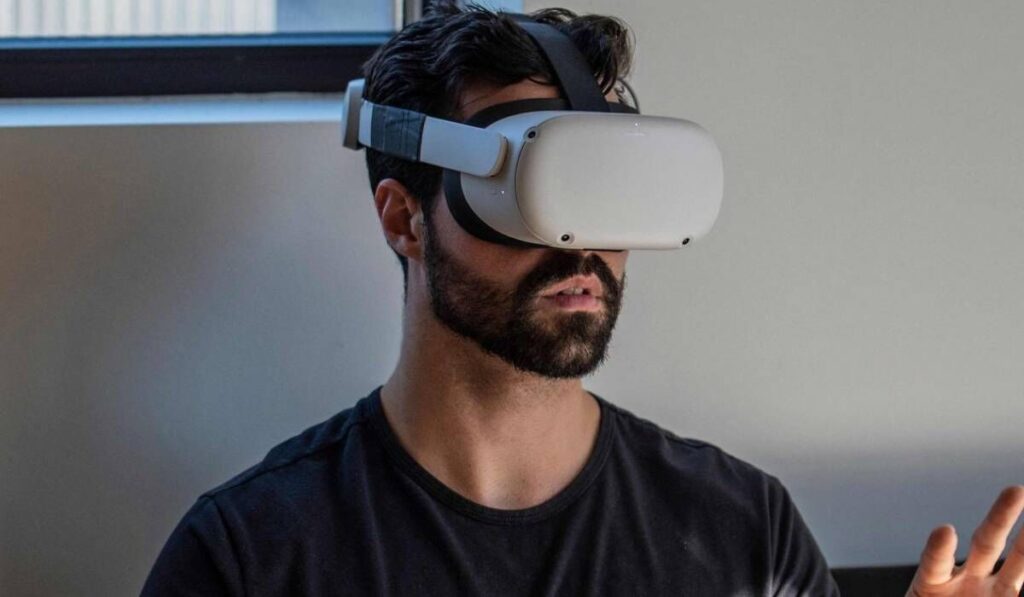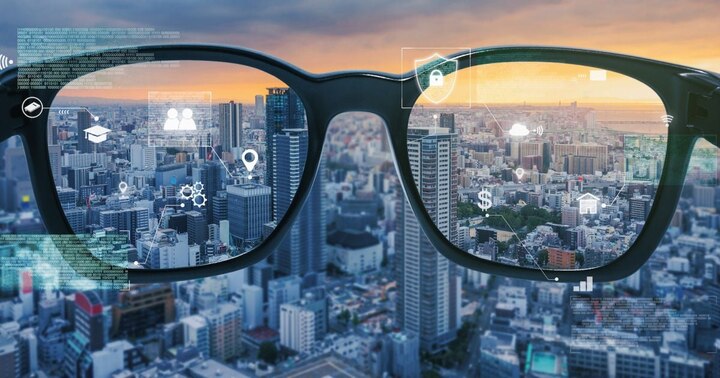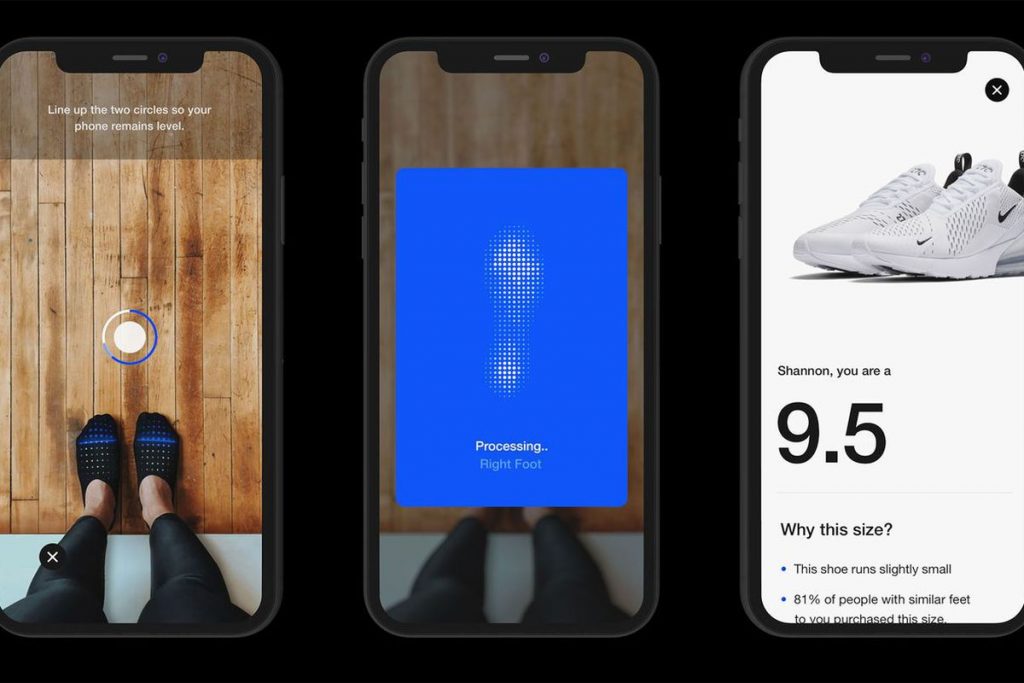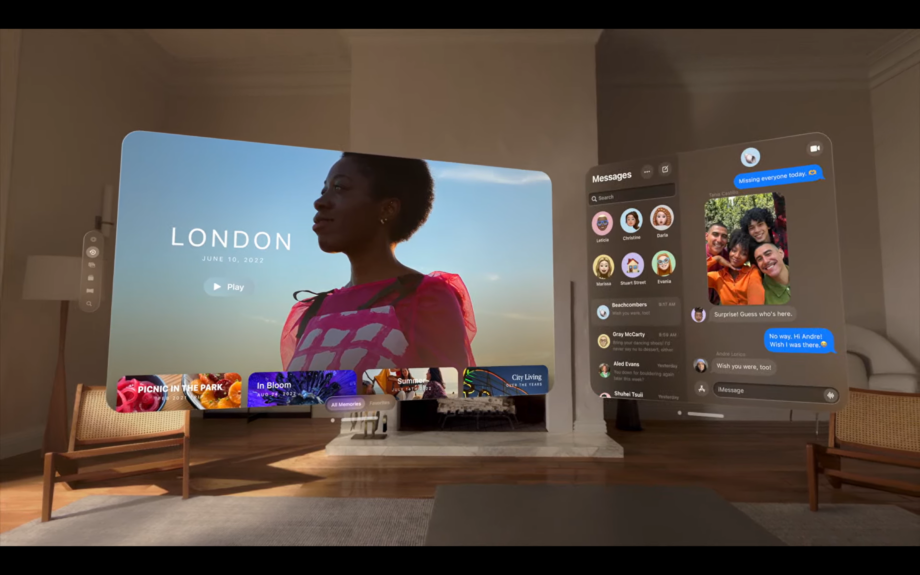augmented reality
Is Meta testing Reels on Quest?
On its Quest headset, Meta is testing a means for users to watch Reels. CEO Mark Zuckerberg posted a video on Meta’s broadcast channel showcasing how a Reel will appear in virtual reality.
It appears that you can browse through Reels in a window that opens against your virtual background, much like when you open other apps on the OS.

It’s unclear whether Reels will be included in Meta’s Instagram app for the Quest or whether users will be able to test it out. The Verge contacted Meta for comment, but they didn’t react right away.
Also Read: How Exciting Is The New Apple Health Features?
In any case, adding Reels to Quest is an indication that Meta is prepared to integrate its systems and apps more tightly. Additionally, it makes an announcement just a week after Meta unveiled the $499 Quest 3 and days after Apple unveiled the $3,499 Vision Pro.
During the WWDC23 event, Apple demonstrated the Vision Pro Mixed Reality headset. The $3499 headset’s transparent visor and several cameras for motion and vision tracking enable it to offer Virtual Reality and Augmented Reality content.
Apple is actively promoting its platforms, apps, and services on the Visio Pro. On the day that Vision Pro launches, content from Disney+ and its affiliated content producers will be available.
Zuckerberg responded to the Vision Pro by claiming Apple’s vision for the device isn’t the one he wants, noting that Apple primarily focused on solitary activities during its presentation. According to Zuckerburg, “Our vision for the metaverse and presence is fundamentally social. It’s about people interacting in new ways and feeling closer in new ways.”
Quest 3, the next-generation virtual and mixed-reality headgear, was unveiled by Zuckerberg last week and will be available later this year. The 128GB headgear starts at $499.99, and customers will also have the option of adding more storage.
Also Read: What’s so ‘pro’ about the Apple Vision Pro headset?
It has a newer Snapdragon chipset, which offers graphics performance that is more than twice as fast as Quest 2’s Snapdragon GPU from the same generation. According to the business, “On Quest 3, our best-in-class Meta Reality technology lets you seamlessly blend your real world with the virtual one.”
Meta is motivated by the creation of a unified ecosystem, to put it simply. Although social media networks like Whatsapp, Instagram, Facebook, and others exist, Meta would work to maintain the Quest ecosystem’s social nature by encouraging user interaction.

I am a law graduate from NLU Lucknow. I have a flair for creative writing and hence in my free time work as a freelance content writer.
Will 2023 be the year of AR glasses?
Even though smart AR glasses with augmented reality capabilities haven’t completely taken over, a lot of applications for augmented reality are now in use.
Applications of today frequently take the shape of Head-up Displays (HUDs), which are transparent displays that present data without obstructing the view, similar to a window with writings on it. Except that the annotations are data that adjust to the surroundings being examined. HUDs were first created for use in military airplanes.

The Integrated Visual Augmentation System, a $22 billion program launched by the American Army this year, will create mixed reality battle goggles (IVAS). With the use of the new eyewear, soldiers may communicate in real-time about information like maps or enemy locations while they are engaged in combat.
However, HUDs are already being employed in other industries, including cars and commercial aviation. HUDs, which can display crucial information like driving directions on the driver’s windscreen without requiring the driver to take their eyes off the road, is viewed as the next step in advancing the driving experience, especially for cars.
Automakers like Kia, who employ the HUD in models like the Kia EV6, Kia Niro, and others, are already implementing this form of AR HUD.
Assisted reality is a different version of AR that is being used in a variety of fields. It is comparable to Augmented Reality in that information is shown on a screen over the user’s surroundings, but it is less immersive.
One business, RealWear, creates head-mounted devices for aided reality for front-line workers in sectors such as healthcare, energy, manufacturing, and automotive. According to Jon Arnold, vice president of EMEA at RealWear, the primary use cases for XR (or extended reality, which encompasses both augmented reality and aided reality) today are focused on business and security.
The potential for how AR glasses will change our user experience—and our lives—grows as digital behemoths like Google, Apple, and Magic Leap draw closer to releasing new types of smart glasses.
Take the Metaverse as an illustration. However, headsets like The Magic Leap 2 provide a fully immersive experience even while XR gear isn’t yet ready for the Metaverse (it’s too pricey, too large, or just not very good).
Users will require wearable tech and glasses like these to take them there if they intend to spend any time in the metaverse.
Faster networks for AR will enable regular employees to better interact in real-time with their international teams. What precisely does this look like? Everyone participating in a virtual presentation or meeting would be able to access the same material at the same time and collaborate on real-time digital content interaction thanks to 5G-enabled AR.
AR and VR are still far from being completely supported by today’s 5G. Meanwhile, cutting-edge smart glasses solutions continue such as in Japan. Japanese customs authorities employ smart glasses to combat smuggling since they can instantly share cargo photographs with other experienced inspectors.

I am a law graduate from NLU Lucknow. I have a flair for creative writing and hence in my free time work as a freelance content writer.
Meta buys smart lensmaker Luxexcel to further AR ambitions
Meta is increasing its investment in the metaverse by acquiring Luxexcel which is a Dutch firm that focuses on 3D-printing corrective lenses for smart glasses. The information was first confirmed by the Dutch newspaper De Tijd via TechCrunch, and Meta has now clarified the acquisition to The Verge.

“We’re excited that the Luxexcel team has joined Meta, deepening the existing partnership between the two companies,” Meta says in a statement provided by Ryan Moore, the company’s head of financial communications.
Source: theverge.com
Whilst details of the deal are uncertain, Meta CTO and Head of Reality Labs, Andrew Bosworth disclosed in a blog article previously this month that the firm is spending “about half” of the metaverse-focused team’s operational costs in augmented reality (AR) with the additional half going toward constructing virtual reality products (VR) since it continues to lose billions.
Luxexcel which was established in 2009, claims to be able to incorporate holographic film and projectors into prescription lenses to develop an augmented reality environment.
In 2021, it collaborated with WaveOptics, the firm that supplies the displays for Snap’s Spectacles, to develop a lens equipped with waveguides, or perhaps the transparent display technology required to overlay virtual objects on a real-world environment of the user.
Just as Meta works on its very first set of AR glasses, it is possible that we will not receive a final piece for some time. According to Bosworth, Meta’s AR glasses will necessitate years of upgrades as the company strives to make the device “slimmer, lightweight, efficient, and more effective.”
As per The Verge’s Alex Heath, the first edition of Meta’s AR glasses would be accessible only to developers, similar to Snapchat‘s Spectacles, with two subsequent pairs potentially becoming accessible to customers over several years.
However, Meta is getting closer to its target, as it has added color video passthrough to its expensive latest Quest Pro headset. It also collaborated with Ray-Ban to roll out the Ray-Ban Stories which is a pair of smart glasses that include cameras, speakers, and also microphones, in 2021. The lenses do not include built-in displays, however, this recent venture may be able to help Meta achieve that in the future.

I am a student pursuing my bachelor’s in information technology. I have a interest in writing so, I am working a freelance content writer because I enjoy writing. I also write poetries. I believe in the quote by anne frank “paper has more patience than person
PTC Inc – An American Technology Company Specializing In IoT And Augmented Reality.
PTC Inc is a famous American software company that was founded in 1985. The main products and services of the company include the Internet of Things (IoT), Augmented Reality (AR), and collaboration software. The headquarters of the company is based in Boston, Massachusetts, US. A Russian immigrant and mathematician, Samuel P. Giesberg is the mastermind behind the foundation of PTC Inc. He worked as a software engineer at other companies before founding PTC. Today, this public multinational company has more than 6,000 employees spread across 30 countries.
The Initial Story Of PTC Inc
In May 1985, Samuel Giesberg officially launched PTC Inc and worked for developing a new CAD-CAM program. In the first few years, Samuel was looking for venture capitalists to market his new software. Initially, he was turned down by many venture capitalists but at last, he received a total fund of $4 million from Charles River Ventures and other firms. In 1988, the company launched its first product and by then half the funding money was invested. The first product of the company was the CAD-CAM program but PTC entered late in the market and was already surrounded by powerful rivals.
The CAD-CAM software technology entered the market in the 1960s and it was in the late 1980s that Samuel launched the new software. But, what he brought into the market has an added innovation in the already developed technology which left its rival surprised. For example, the CAD-CAM software in the market was able to make different changes in a 3D model but PTC’s software was able to predict the consequences of that change in the overall model. Thus, this new software became a breakthrough as it made the work of an engineer much easier. Within one year, PTC made a total sales of $11 million and a net income of more than $1.5 million.

Business Growth
After the sales started escalating in the late 1980s, the company filed its first IPO and went public. Samuel also launched different versions of the mechanical software for various operating systems. Only after two years of launching the CAD-CAM software, PTC was controlling 10 percent of this software market. By the end of 1991, the total sales of the company reached $45 million. The CAD-CAM Pro/Engineer system was such a big hit that it attracted clients of big companies who were established in the industry. In 1992, this technology was named “Technology of the Year” by IndustryWeek. PTC also made into the list of Fortune 500 in 1995 and crossed $800 million in revenue.
In 1993 PTC’s market share increased to 20 percent and it landed big clients like Ford Motor and Caterpillar Inc. By this time the company also started increasing the number of employees and the annual revenue doubled within a year. In 1998, PTC acquired Comoutervision, where Samuel was a former employee, and Windchill Technology. In the early 2000s, PTC broadened the range of products as it developed lifecycle management software for products and services. PTC made both CAD-related and other acquisitions that include Polyplan Technologies, NetRegulus, Synapsis Technology, Mathsoft, CoCreate, NC Graphics, etc. Three years ago, the company landed a major investor, Rockwell Automation. It invested $1 billion in the company and acquired an 8.4 percent ownership stake.
About The Founder
Samuel Giesberg was a maths professor who fled to the US in 1974 with his 11-year old son. After he moved to a new country, he started working as a software engineer and soon he became a prodigy at Computervision (the company he worked for). Samuel’s brother Vladimir gave him the push to start his own company and also suggested landing some investors for financing the same. Samuel had ten years of experience in designing CAD-CAM software and thus decided to leap.

Annasha Dey is an NIT student, who apart from studying engineering is also a content writer. She has a great interest in photography, writing, reading novels, and travelling as well. She is a foodie who loves socializing and hanging out with her friends. She is also a trained Kathak dancer and a big fashion enthusiast. Dey also loves watching TV series, which includes F.R.I.E.N.D.S. and Big Bang Theory. To be a better writer she prefers to read more
Nike Makes Use of Augmented Reality and AI to Build a New Shoe Measuring Feature
According to the researches, 60% of the people worldwide wear the wrong shoe size, and even it has been almost a hundred years since the shoe size measuring tool, ‘Brannock Device’, was invented, many of the people have not used it to measure their real shoe size.

To fight with the struggle people go through while trying out their shoes and finding the right shoe size for them, the biggest sport shoe manufacturers, Nike, has developed a new AI-powered feature to measure the shoe size. The company had been working towards mixing technology with its products and has been exploring the augmented reality for quite some time now. And, finally, it has brought a shoe size measuring feature, ‘Nike Fit’, to its official app, with the help of AI.
The company was secretly testing the feature, at three of its U.S. stores, in Pasadena, Seattle, and Dallas. The company founded out that all the different shoes from the Nike fit the customers differently, as make and the material of those shoes are different.
The company has announced that all its stores will now have this new feature on the Nike app, which will help the customers to scan their foot and choose the right size shoes of every type, whether it is an Air Max, Jordans, Air Force Ones, or even a soccer cleat.
Use of this new feature in the stores will reduce a lot of extra work that the salesperson has to do in order to find the correct shoe size for the customers. In the retails, the customers will have to stand on a mat, and the salesperson will scan the foot size with the help of an iTouch device. After measuring the foot size, the app will provide all the options of shoes for the customer to choose from.
People can also use the feature on the app at their home. The process of measuring the foot is quite simple. After opening the mobile app, along with the select size option under a product, you will see a new option, for measuring the shoe size. As soon as you click on the option, the camera of the phone will open, and you will be asked to stand alongside a wall and scan your foot from the top. You will now have to click the button in between, and the right shoe size will render on your screen.
The new feature will make use of AI and the scientific data, to measure the shoe size of a customer. Using at least 13 data points out of 32 data points, the app is capable of efficiently measuring the correct shoe size for the customers. The launch of such technology has ignited the scope for measuring apps for other things, too. Like, while ordering online, people are often confused over their shoe or clothes’ size. But if this type of technology will be available on every online website, it will be easier for people to buy things without thinking much.

Yashica is a Software Engineer turned Content Writer, who loves to write on social causes and expertise in writing technical stuff. She loves to watch movies and explore new places. She believes that you need to live once before you die. So experimenting with her life and career choices, she is trying to live her life to the fullest.

